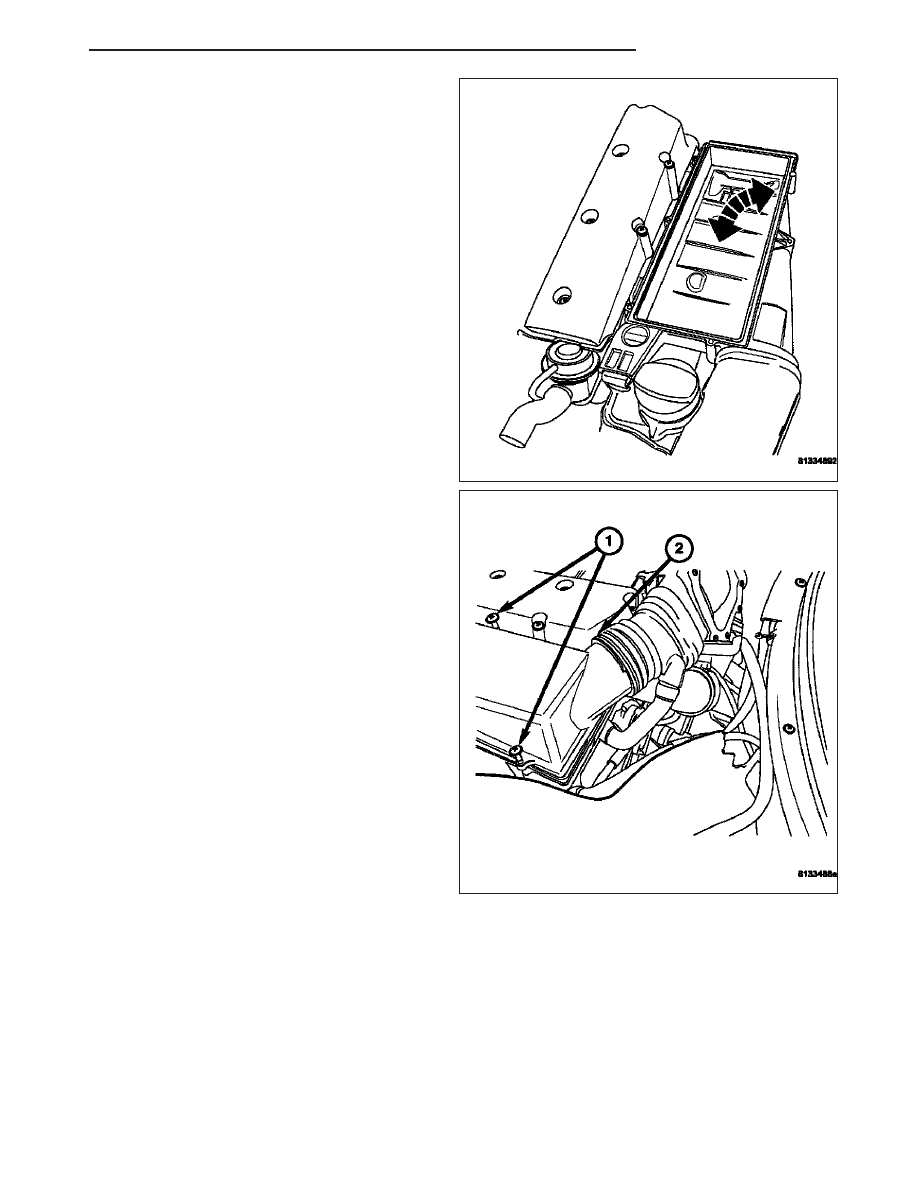Chrysler Crossfire. Manual - part 693

7. Install both right and left lower air cleaner hous-
ings. (Refer to 9 - ENGINE/AIR INTAKE SYSTEM/
AIR CLEANER HOUSING - INSTALLATION).
8. Install the upper air cleaner housings. (Refer to 9 -
ENGINE/AIR
INTAKE
SYSTEM/AIR
CLEANER
HOUSING - INSTALLATION).
9. Install the engine cover. Align the engine cover
retaining clips to the rubber mounts, and push
down firmly to connect engine cover to rubber
mounts.
Note: To ease the installation of the engine cover,
apply a small amount of lubricant to the engine
cover rubber mounts.
10. Connect the negative battery cable.
ZH
FUEL INJECTION
14 - 53